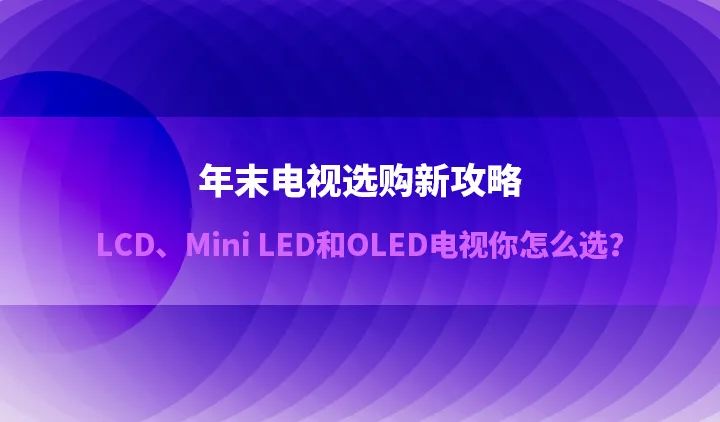The annual Spring Festival is approaching, and this time of year is when people buy new appliances. After a year of hard work, many hope to add some appliances to their homes or treat themselves to something nice. Additionally, the Spring Festival is a traditional peak season for promotions, with many discounts and benefits waiting for everyone.
As a must-have appliance for families, televisions are the most popular and a tool that everyone can enjoy together. The sales volume during the Spring Festival is quite considerable. Because the Spring Festival is a hot promotion period for TVs, many brands are launching aggressive promotional campaigns to capitalize on this trend.
For consumers, choosing the right TV can be a significant challenge. Currently, the market offers popular products including LCD TVs, Mini LED-backlit LCD TVs, quantum dot TVs, and high-end OLED TVs. So how should consumers choose a TV that uses innovative display technology?
Today, we will focus on LCD, Mini LED, and OLED, discussing the advantages and characteristics of these technologies, their differences, and how we should choose a TV that utilizes these technologies.

For LCD TVs, they are currently the most prevalent, with the largest market share and sales volume. LCD TVs are also the popular choice for consumers, offering good value for money. The advantages and disadvantages of LCD TVs are very prominent; the advantages include the use of inorganic materials, mature technology, long lifespan, and no flicker, which is beneficial for eye protection.
However, there are also disadvantages; the color performance is not outstanding, it remains in an excited state, cannot achieve true black, and there are issues with backlight leakage. The positioning of LCD TVs is very clear; the technology is mature, and they offer high cost performance with a wide range of sizes. Therefore, for consumers on a budget, choosing an LCD TV is a safe bet.
Mini LED-backlit LCD TVs and quantum dot TVs utilize Mini LED, which is not a display technology but a backlight technology, inheriting the high efficiency, high brightness, reliability, and fast response time of inorganic LEDs. Each Mini LED can act as a pixel on the screen, achieving precise local dimming and offering better light uniformity, higher contrast, and more detail in light and dark areas, thus enhancing display quality.
LCD TVs and quantum dot TVs using Mini LED technology can break through color performance limitations, achieving higher quality image representation. Therefore, Mini LED is a driving force for LCD TVs, allowing them to maximize their value. Furthermore, Mini LED backlighting can also be applied to quantum dot TVs, enhancing their image quality performance even further.
So, if you feel that the picture quality of a regular LCD TV does not meet your needs, choosing a Mini LED-backlit LCD TV or a quantum dot TV is also a good option.
Finally, there are OLED TVs, which have absolute authority in the high-end field and are one of the core technologies for future televisions. The principles of OLED differ entirely from those of LCD and Mini LED; OLED stands for organic light-emitting diode, which does not require a backlight source and can emit light independently, offering a wide viewing angle, fast response time, no ghosting, and no trailing effects. When displaying black images, OLED can achieve pure black and infinite contrast.
Additionally, the flexibility of OLED panels allows for foldable displays, curved displays, flexible displays, and transparent displays, achieving various unique display effects, making it a likely benchmark for the next generation of display technology. Currently, OLED is widely used in mobile phones, and its adoption in large-screen televisions is imminent.
In summary, LCD is an entry-level product that can handle watching movies and gaming experiences adequately, with average picture quality; Mini LED-backlit LCD and quantum dot TVs can provide more backlight zones and better color performance; OLED represents the high-end market with very high picture quality, but of course, it comes at a high price.
Therefore, when buying a TV during the Spring Festival, it’s essential to consider your needs and budget, and not to be swayed by discounts. Regular LCD TVs focus on cost performance, Mini LED TVs target the mid to high-end market, while OLED TVs are positioned as high-end products. Now you know how to choose a TV during the Spring Festival!